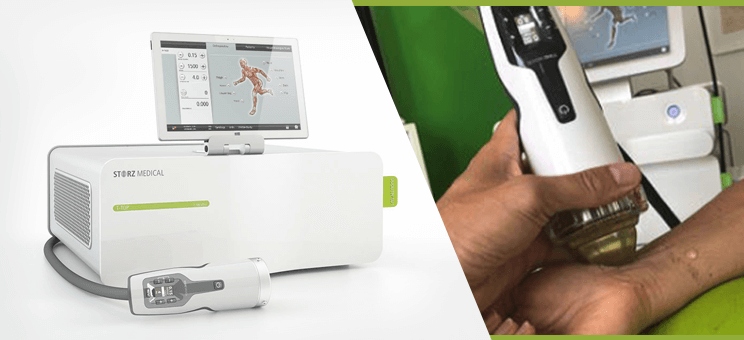
Carpal tunnel syndrome (CTS) is a relatively common disorder suffered by people who use their hands in ways that require repetitive motion throughout the day. Computer work, dentistry, construction, painting and other occupational fields that require repetitive motion, often of the dominant hand, may predispose you to CTS.
Carpal tunnel syndrome is caused by compression of the median nerve in the wrist. Symptoms typically get worse over time. If left untreated, pressure on the median nerve can lead to nerve damage and worsening symptoms.
The carpal tunnel is a narrow passageway in the wrist formed by small wrist bones called carpals. The roof of the tunnel is formed by the transverse carpal ligament. The median nerve is one of the main nerves in your hand, originating in your neck, and traveling down your arm and forearm, passing through the carpal tunnel and into your hand. The nerve innervates your thumb, index, middle, and ring fingers, and controls muscles around the base of your thumb.
Nine flexor tendons that bend your fingers and thumb also travel through the carpal tunnel. When the tunnel becomes narrowed or when surrounding synovial tissue becomes inflamed, pressure is exerted on the median nerve, causing pain, numbness, tingling, and weakness in the hand.
Because CTS is an overuse syndrome, symptoms manifest gradually and worsen over time. Symptoms may include:
Nighttime symptoms are common.
There are several traditional treatment options for CTS, including:
Bracing: A brace or splint, worn during repetitive use activities and at night, keeps your wrist in a neutral position to reduce pressure on the median nerve.
NSAIDs: Over-the-counter pain relievers may help reduce inflammation and ease discomfort for short periods of time.
Activity Change: Discontinuing activities that cause discomfort may lead to complete recovery, but may not be practical if the activity is occupational.
Nerve Gliding Exercises: A physical therapist may prescribe special exercises that help the median nerve to glide more smoothly within the carpal tunnel.
Steroid Injections: Corticosteroids injected into the carpal tunnel can relieve pain and reduce inflammation. However, patients run the risk of structural damage to the median nerve and tendons.
Surgery: Generally used as a last resort, a surgical procedure called a carpal tunnel release relieves pressure on your median nerve by cutting the ligament that forms the roof of the tunnel, increasing the size of the tunnel and decreasing median nerve pressure.
Despite the broad range of traditional treatment options, their efficacy has been shown in many cases to be either insignificant or short-lived.
ESWT is a fairly new and non-invasive technology that uses shockwaves to treat CTS. Shock waves are a sequence of sonic pulses with a high peak pressure, rapid pressure rise, and short duration that are generated outside the body and focused on the carpal tunnel.
A 2013 study by Soek and Kim, published in the American Journal of Physical Medicine and Rehabilitation, set out to investigate the effectiveness of ESWT for the treatment of CTS, and to compare it to that of corticosteroid injections. The study of 36 CTS patients was a randomized controlled trial that compared a single session of ESWT (1000 shots at the maximal tolerable intensity) with one corticosteroid injection.
The study’s authors found ESWT to be as useful as corticosteroid injections for treating CTS, with the added advantage of being non-invasive.

At NYDNRehab we use a combination of methods to improve the ability of the median nerve to glide within the carpal tunnel and relieve pain. Treatment methods may include:
Failure to treat CTS can lead to worsening pain and inflammation, and possible long-term damage to the median nerve. Do not let your CTS go untreated. Contact NYDNRehab today, and begin your journey to full recovery from CTS.
Dr. Lev Kalika is a world-recognized expert in musculoskeletal medicine. with 20+ years of clinical experience in diagnostic musculoskeletal ultrasonography, rehabilitative sports medicine and conservative orthopedics. In addition to operating his clinical practice in Manhattan, he regularly publishes peer-reviewed research on ultrasound-guided therapies and procedures. He serves as a peer reviewer for Springer Nature.
Dr. Kalika is an esteemed member of multiple professional organizations, including: